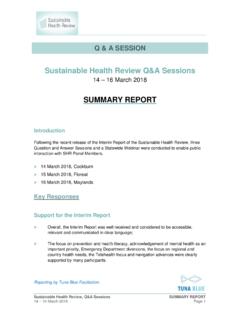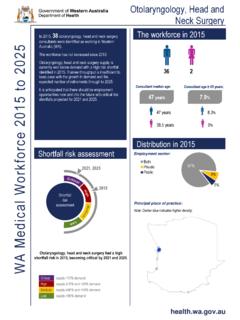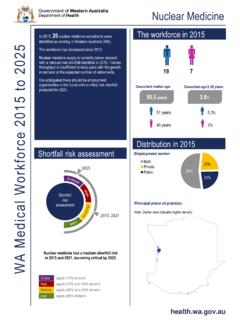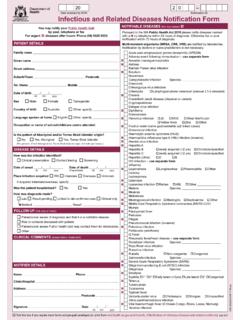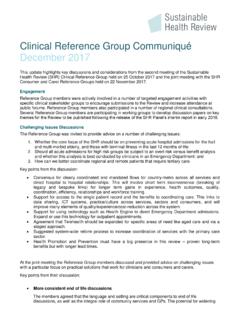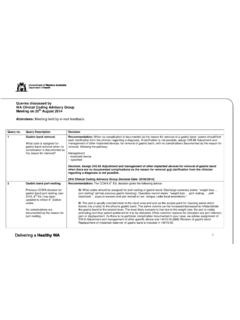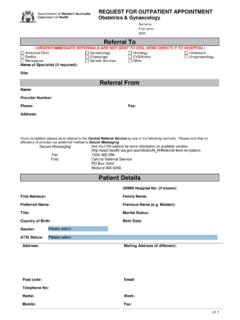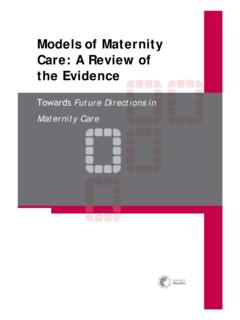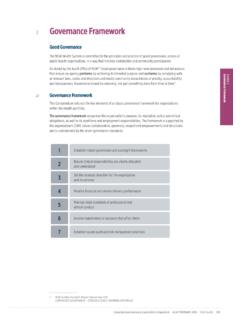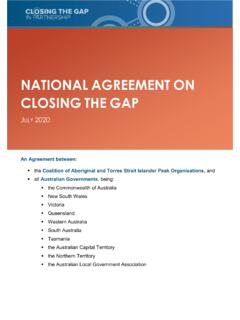Transcription of March 17, 2022 Molnupiravir - ww2.health.wa.gov.au
1 Yes January 2023.. Molnupiravir (Lagevrio ). What Prescribers and Pharmacists Need to Know Why is Molnupiravir used to treat COVID-19? Molnupiravir is an antiviral medication that works via a mechanism of action known as viral error catastrophe. It is a prodrug that is metabolised to the ribonucleoside analogue n-hydroxycytidine (NHC). NHC distributes into cells where it is phosphorylated to form the pharmacologically active ribonucleoside triphosphate (NHC-TP). NHC-TP incorporation into viral RNA by the viral RNA polymerase results in an accumulation of errors in the viral genome leading to inhibition of replication. What is the benefit of Molnupiravir for COVID-19? The Pharmaceutical Benefits Advisory Committee (PBAC) are satisfied that, for some patients, Molnupiravir is likely to be more efficacious than the current standard of care in reducing the risk of developing severe disease leading to hospital admission.
2 The PBAC acknowledged that most antivirals for COVID-19 have only been evaluated in unvaccinated people. Current recommendations are for people who are at higher risk of primary vaccine failure (such as people who are immunocompromised) or have high risk of disease progression. PBAC - Web Outcome Statement for Molnupiravir - February 2022. Based on preliminary results of the PANORAMIC trial, the National Clinical Evidence Taskforce have suggested that in people who are highly vaccinated that Molnupiravir may not make a difference to the risk of hospitalisation, as their risk of hospitalisation is already low. The COVID-19 Treatment Expert Advisory Group reviewed evidence independently in the WA context along with the statement provided recently by Prof. Michael Kidd on the 9 Dec 2022, and recommend that Molnupiravir may make a difference to the duration of a patient's symptoms and the patient's viral load and still has a place in therapy when Paxlovid is contraindicated or otherwise unsuitable.
3 Who should receive Molnupiravir ? Within the patient population for which Molnupiravir is recommended for use, decisions about the appropriateness of treatment with Molnupiravir should be based on the patient's individual risk of severe disease, on the basis of age and multiple risk factors. Molnupiravir should be considered for use only if nirmatrelvir and ritonavir is contraindicated or otherwise unsuitable. It is recommended that the patient be provided with a Molnupiravir patient information leaflet and that patient consent is obtained prior to commencing therapy. Details of the patient's medical condition necessitating use of Molnupiravir must be recorded in the patient's medical records. Has received a positive PCR or RAT result AND. Has at least one sign or symptom* attributable to mild to moderate COVID-19 ( , do not require oxygen) and do not As per the PBS Listing, require hospitalisation at the time of prescribing; AND.
4 Adults (18 years and Is within five (5)* days of symptom onset; AND. over) are eligible for At least 18 years of age and moderately to severely immunocompromised', or treatment with Molnupiravir if patient: Is aged 50 years or over with two risk factors, or Identify as aboriginal and Torres Strait Islander, at least 30 years of age with one risk factor Had a past COVID-19 infection episode resulting in hospitalisation *Can be started after a positive test in asymptomatic patients 70 years and over PBS risk factors include: The patient is in residential aged care Obesity (BMI greater than 30 kg/m2), The patient has disability with multiple comorbidities and/or Diabetes Types I and II, requiring medication for frailty glycaemic control, Neurological conditions, including stroke and dementia and Renal failure (eGFR less than 60mL/min), demyelinating conditions, Cirrhosis, or Respiratory compromise, including COPD, moderate or severe The patient has reduced, or lack of, access to higher asthma (required inhaled steroids), and bronchiectasis, or level healthcare and lives in an area of geographic caused by neurological or musculoskeletal disease, remoteness classified by the Modified Monash Model as Heart failure, coronary artery disease, cardiomyopathies, Category 5 or above.
5 Page 1 of 3. Who should receive Molnupiravir continued . Moderately to severely immunocompromised' patients are those with: 1. Any primary or acquired immunodeficiency including: a. Haematologic neoplasms: leukaemias, lymphomas, myelodysplastic syndromes, multiple myeloma and other plasma cell disorders, b. Post-transplant: solid organ (on immunosuppressive therapy), haematopoietic stem cell transplant (within 24 months), c. Immunocompromised due to primary or acquired (HIV/AIDS) immunodeficiency; OR. 2. Any significantly immunocompromising condition(s) where, in the last 3 months the patient has received: a. Chemotherapy or whole body radiotherapy, b. High-dose corticosteroids (at least 20 mg of prednisone per day, or equivalent) for at least 14 days in a month, or pulse corticosteroid therapy, c. Biological agents and other treatments that deplete or inhibit B cell or T cell function (abatacept, anti-CD20 antibodies, BTK inhibitors, JAK.)
6 Inhibitors, sphingosine 1-phosphate receptor modulators, anti-CD52 antibodies, anti-complement antibodies, anti-thymocyte globulin), d. Selected conventional synthetic disease-modifying anti-rheumatic drugs (csDMARDs) including mycophenolate, methotrexate, leflunomide, azathioprine, 6-mercaptopurine (at least ), alkylating agents ( cyclophosphamide, chlorambucil), and systemic calcineurin inhibitors ( cyclosporin, tacrolimus); OR. 3. Any significantly immunocompromising condition(s) where, in the last 12 months the patient has received an anti-CD20 monoclonal antibody treatment, but criterion 2c above is not met; OR. 4. Others with very high-risk conditions including Down Syndrome, cerebral palsy, congenital heart disease, thalassemia, sickle cell disease and other haemoglobinopathies; OR. 5. People with disability with multiple comorbidities and/or frailty. Molnupiravir dosing requirements for treatment of COVID-19.
7 The recommended dose of Molnupiravir is: 800 mg (4 x 200mg capsules) taken orally every 12 hours for 5 days. What if a patient misses a dose? Molnupiravir capsules may be taken with or without food and should be If the patient misses a dose of swallowed whole ( , not opened, broken or crushed). Molnupiravir within 10 hours of the time The safety and efficacy of Molnupiravir when administered for more than it is usually taken, the patient should 5 days has not been established. take it as soon as possible and resume the normal dosing schedule. In women of childbearing potential, healthcare providers should discuss the chance that they may be pregnant and consider the need for a pregnancy If a patient misses a dose by more than test before commencing treatment. 10 hours, the patient should not take the missed dose and instead take the No dosage adjustment is required in patients with renal or hepatic impairment.
8 Next dose at the regularly scheduled It is important for health professionals to minimise handling of the Molnupiravir time. The patient should not double the capsules, especially if pregnant. Use personal protective gloves when dose to make up for a missed dose. handling. For patients with swallowing difficulties, consult Don't Rush to Crush' or a Hospital Medicines Information Pharmacist for further information. Please note that anyone preparing the solution should consider the risks of exposure as per Product Information Section Fertility, Pregnancy and Lactation. What side effects should I be aware of? Presentation and Storage: The most common adverse reactions in the Molnupiravir treatment Lagevrio is available as a Swedish Orange'. group in the MOVe-OUT trial were diarrhoea (2%), nausea (1%) opaque capsule with 82 printed with white ink. and dizziness (1%), all of which were Grade 1 (mild) or Grade 2 Each capsule contains 200mg of Molnupiravir .
9 (moderate). Lagevrio should be stored below 30 C in the While serious adverse events occurred in 7% of patients receiving original bottle, away from heat, light and moisture. Molnupiravir , none were considered drug-related by the investigator and most were COVID-19 related. Refer to the product information for a complete list of possible adverse effects. As Molnupiravir is a provisionally approved medicine which has no For further information: relevant post-marketing data, it is important to document and report all (from possible to confirmed) adverse effects experienced by the patient during treatment to inform its safety profile and future use. Visit: Lagevrio is subject to additional monitoring in Australia to allow Lagevrio Product Information ( ). quick identification of new safety information. Healthcare WA COVID-19 Information for health professionals - under Clinical Guidelines professionals should report any suspected adverse events to the TGA at Page 2 of 3.
10 What drug interactions should I consider before Contraindications: prescribing Molnupiravir ? No drug interactions have been identified based on the limited data Hypersensitivity to the active substance currently available. or to any of the excipients. Clinical drug-drug interaction trials of Molnupiravir with concomitant Excipients include: croscarmellose medications have not been conducted. sodium, ethanol absolute, hyprolose, Neither Molnupiravir nor NHC are inhibitors or inducers of major hypromellose, iron oxide red, isopropyl drug metabolising enzymes or transporters, therefore, the potential alcohol, magnesium stearate, for Molnupiravir or NHC to interact with concomitant medications is microcrystalline cellulose, potassium considered unlikely. hydroxide, propylene glycol, shellac, strong ammonia solution, tert-butyl The University of Liverpool COVID-19 Drug Interactions checker3.

